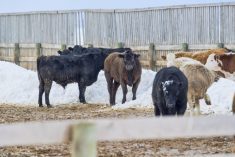Migrating water fowl may be carrying avian influenza viruses from Asia to the Americas, U. S. government researchers reported Oct. 28.
They found genetic evidence that some non-dangerous influenza viruses infecting northern pintail ducks in Alaska are genetically more closely related to Asian strains of bird flu than to North American strains.
“Although some previous research has led to speculation that intercontinental transfer of avian influenza viruses from Asia to North America via wild birds is rare, this study challenges that,” said Chris Franson, a research wildlife biologist at the U. S. Geological Survey, who helped lead the study.
Read Also

Manitoba farmers offered crop insurance carrot on marginal acres
Farmers planting poor field acres to perennial forage can get a break on forage crop insurance programs under new Forage Advantage pilot program.
USGS and U. S. Fish and Wildlife Service experts have been testing birds in Alaska for any evidence of the highly pathogenic H5N1 bird flu.
Writing in the journal Molecular Ecology, the USGS team said it had collected samples from more than 1,400 northern pintails from throughout Alaska and compared any viruses it found to virus samples taken from other birds in North America and eastern Asia, where northern pintails spend the winter.
None of the samples were found to contain completely Asian-origin viruses and none were highly pathogenic. But certain parts of the genes of the viruses resembled Asian strains, they said.
Since 2003, H5N1 has swept through flocks in Indonesia, Korea, China and elsewhere in Asia, Europe, the Middle East and parts of Africa. It has killed or forced the slaughter of over 300 million birds, occasionally infects people and has killed 245 of 387 infected people so far, according to the World Health Organization.














